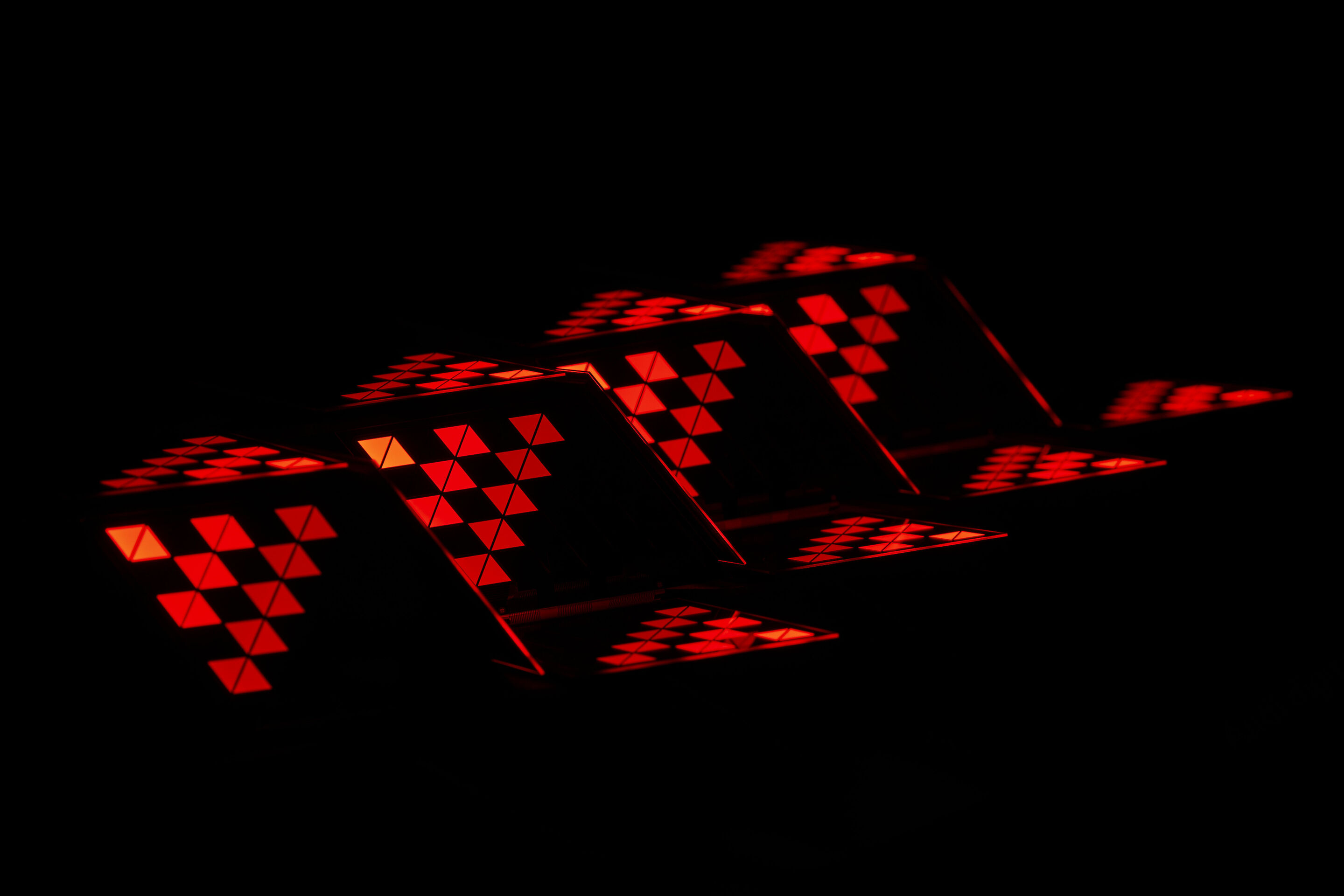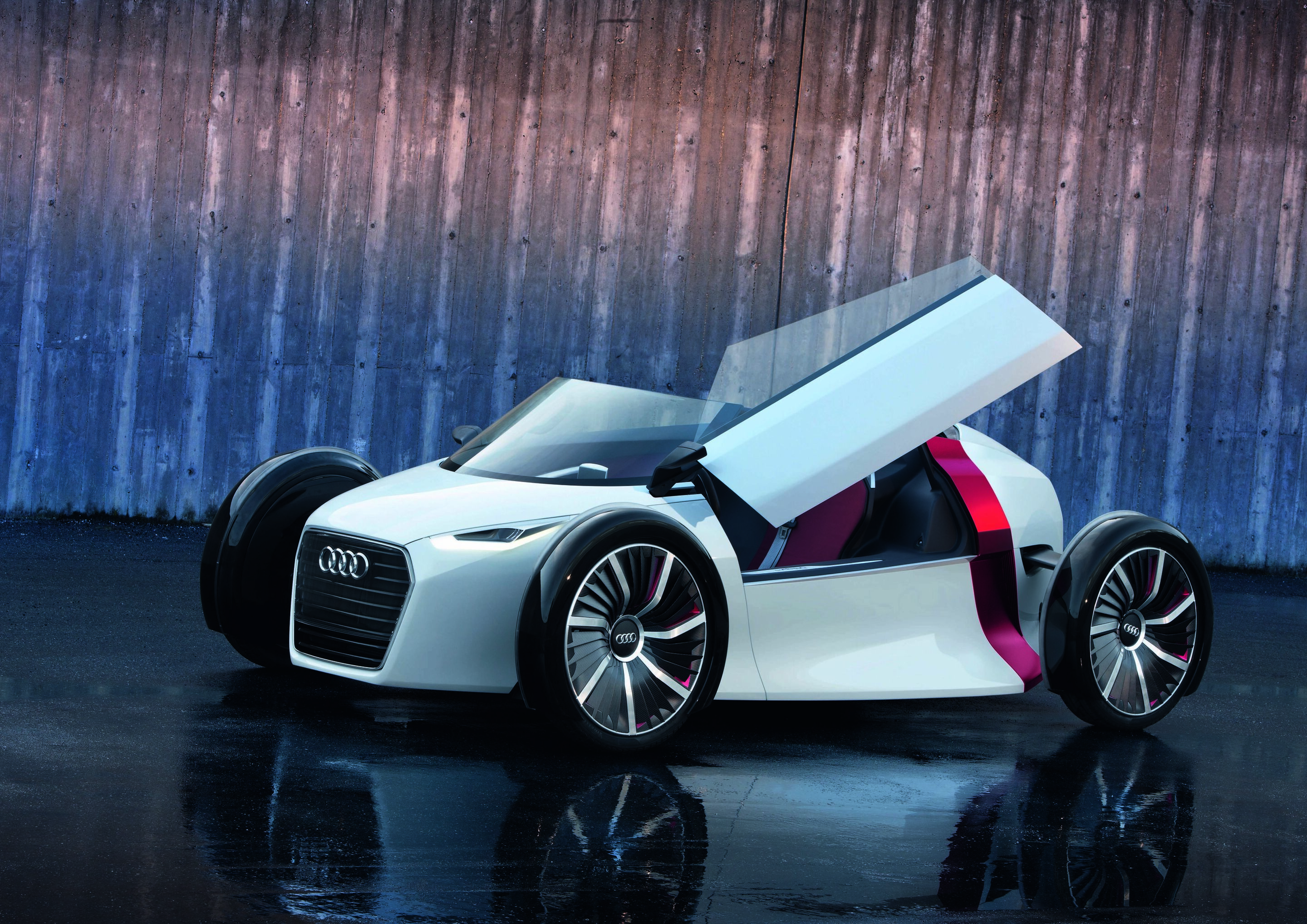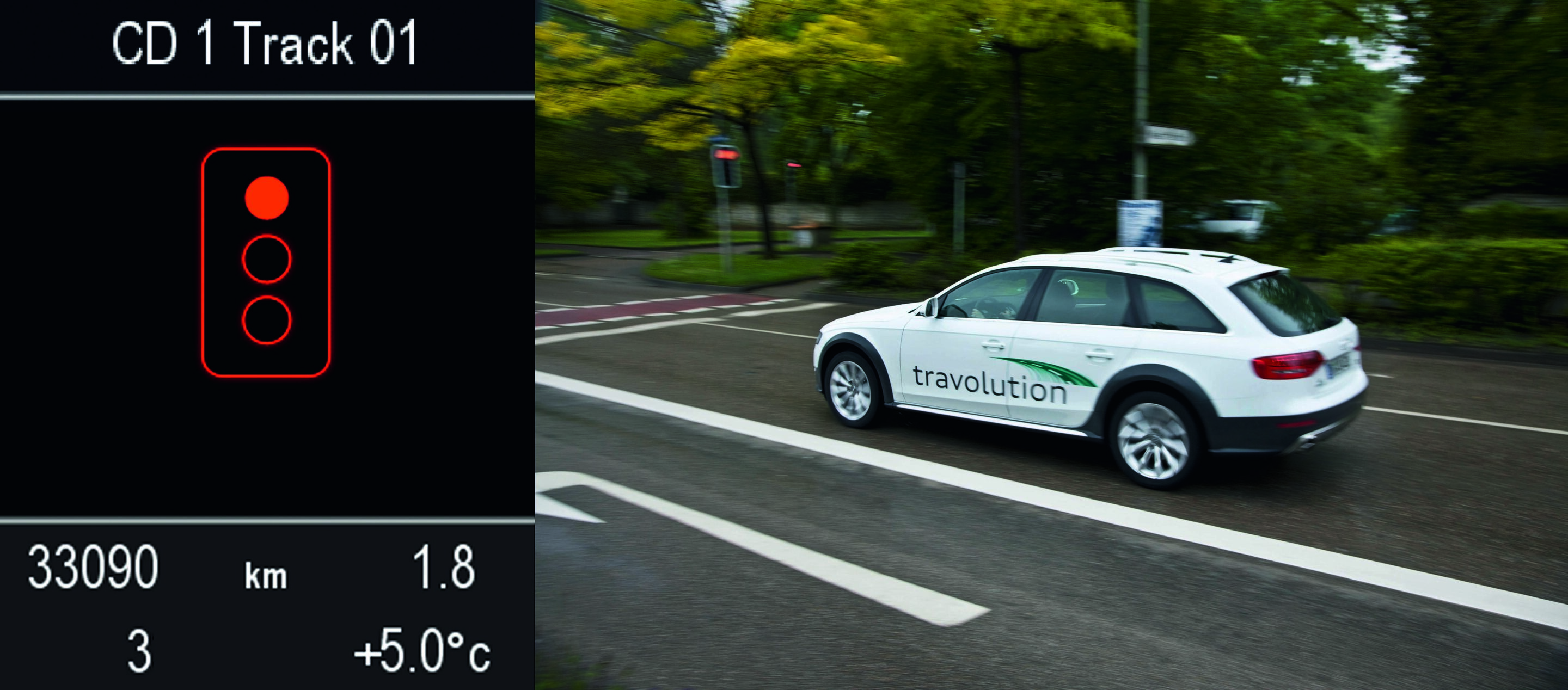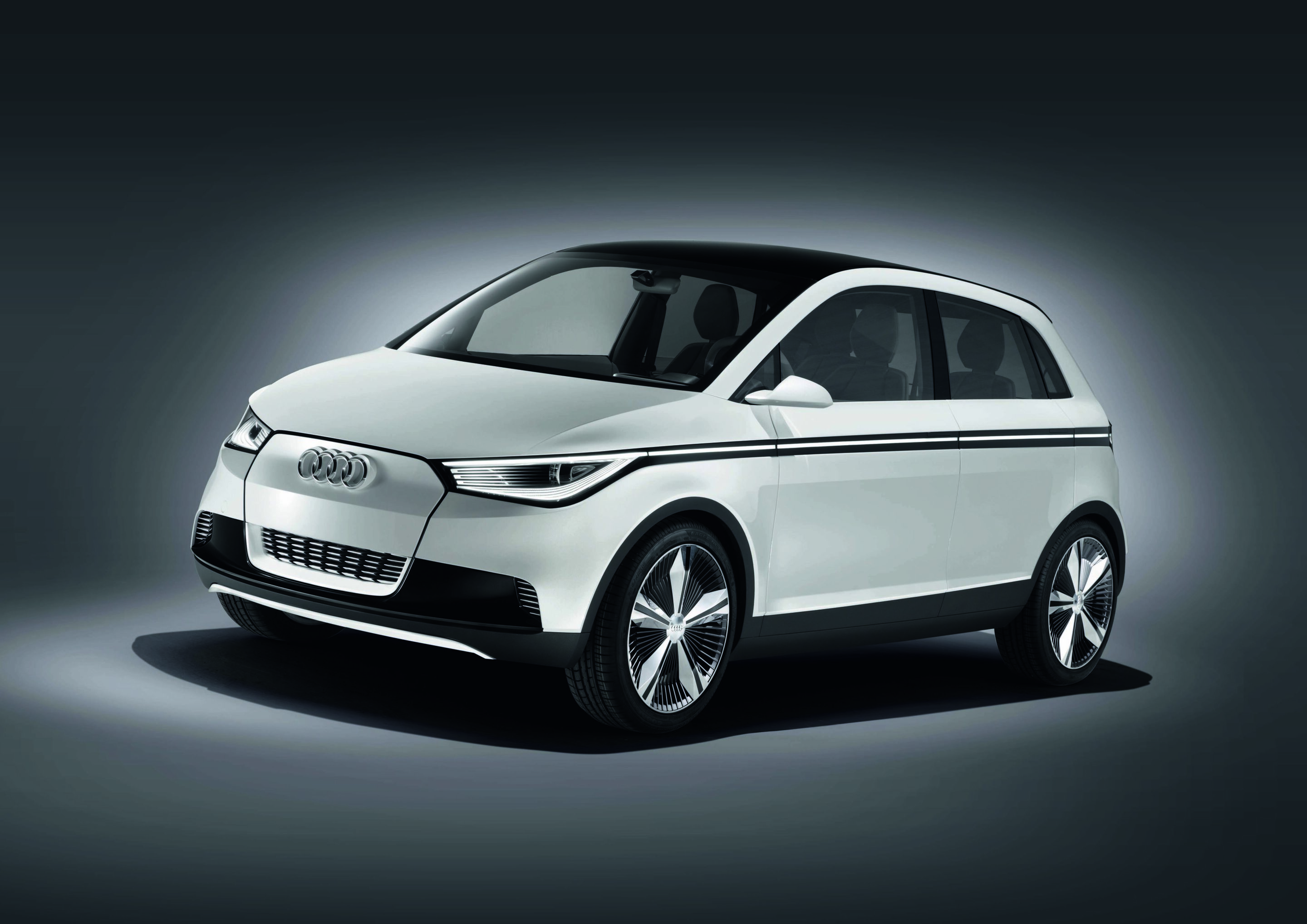Search
All results
(378)
MediaInfos
(138)
News
(1)
BasicInfos
(5)
Press kits
(2)
Images
(52)
Videos
(4)
Publications
(16)
 Brand-defining aesthetics and uncompromising functionality: How Audi reinvents light
Brand-defining aesthetics and uncompromising functionality: How Audi reinvents light
Audi is advancing into new dimensions in automotive lighting technology. Originally, vehicle lighting mainly served the purpose of ensuring traffic safety for all road users. Previously unknown prospects are now opening up in the wake of digitizing headlights and rear lights: light becomes a medium of external communication and interaction, personalizes design, and provides customers with new styling and customization options.
Download PressInformation
 The Audi urban concept
The Audi urban concept
The three-dimensional rear lights with the tail light and brake light are integrated into the vehicle body and wrap around the top of the rear window. At the back of the car is a small luggage compartment that pulls out like a drawer. The front segment of the greenhouse is movable – another innovative idea that is unique to the Audi urban concept. Mounted on rails, it can be slid back by hand over the fixed rear segment. It is up to the driver to decide whether to close the canopy or leave it open. The technology study is a roadster-on-demand that has neither roll-down windows nor a heavy air conditioner. When closed, the canopy provides protection against rain and cool air. Audi has also developed a second body variant as an alternative to the urban concept: a Spyder with a flat window strip wrapping around the cockpit and doors that open upward at an angle. Interior Entry to the Audi urban concept is via the slide-back canopy. The driver and passenger step over the edge of the vehicle as if they were stepping into the bathtub – there are no doors. This does not require any great flexibility; a handle on the windshield frame and special cutouts on the seating surfaces facilitate entry. The show car offers room for two. The driver and passenger sit next to one another, with the right seat offset by 30 centimeters (11.81 in) to the rear to provide sufficient shoulder and elbow room. The seats are fixed, integral components of the monocoque, which provides for significant weight savings. They are covered with foam seating surfaces custom-fabricated to the measurements of the customer, just like in a racecar. The seat belts run through cutouts in the seat backs. Sitting in the Audi urban concept is somewhat like sitting in an airplane cockpit. The seating position is very sporty. The driver can precisely adjust the positions of the aluminum pedals and the steering column. Both components are telescoping.
 New ideas for urban mobility – Audi improves efficiency and safety in road traffic
New ideas for urban mobility – Audi improves efficiency and safety in road traffic
The company has therefore gone beyond optimizing vehicle technologies and is conducting research into the idea of intelligently controlled traffic. In the travolution project being conducted by the brand with the four rings in Ingolstadt, cars can communicate with traffic lights. This networking makes the flow of traffic smoother and thus reduces CO2 emissions. Audi is assuming a leading role in this field of technology, which is known as Car-to-X communication.
Today’s technology: communicating traffic light systems Road traffic today is still controlled largely with yesterday's technology – at the expense of the environment. When a car stops at a red light, it uses approximately 0.02 liters (0.01 US gallons) of fuel when it pulls away. This corresponds to roughly 5 grams of CO2. In urban traffic, which in Germany is regulated by roughly 60,000 traffic signal systems, the 50 million cars in Germany emit roughly 15 million tons of CO2 or approximately 20 percent of their total emissions. These emissions can be reduced if the traffic lights initiate contact with the vehicles. This is precisely what Audi is targeting with the travolution project. Launched in 2006 at AUDI AG headquarters in Ingolstadt, the project has already produced many promising results. As the project stands now, the Audi experts expect CO2 emissions at traffic lights to decrease by roughly 15 percent. This corresponds to an equivalent of approximately 900 million liters (237,754,846.12 US gallons) of gasoline per year if this new technology were to be deployed throughout Germany. Audi is collaborating with a number of partners in the travolution project, including the City of Ingolstadt, Scheidt & Bachmann GmbH, TaxiFunk Ingolstadt, ADAC (General German Automobile Association), GEVAS software GmbH, the Technical University of Munich, Ingolstadt University of Applied Sciences and the University of Erlangen-Nuremberg.
 Dynamic performance where the sky’s the limit – The Audi RS 5 Cabriolet
Dynamic performance where the sky’s the limit – The Audi RS 5 Cabriolet
Wedge-shaped headlights with wave-like lower edges illuminate with xenon plus lamps and LED strips that form the daytime running lights. Large air intakes are embedded in the distinctively shaped front apron whose ends run out into splitter edges. Sill add-ons and wheel housing extensions dominate the car’s appearance in side profile; the tornado line that defines the shoulder of the RS 5 Cabriolet was drawn to look especially sharp. The door mirror housings have an aluminum look, while the surface of the windshield frame and the decorative trim strips of the window channels and the soft top box cover are made of matt anodized aluminum. The lightweight textile roof of the RS 5 Cabriolet spans over the generously proportioned interior space like a low curved dome; a special foam layer in the roof delivers high acoustic comfort. At the press of a button, the soft top opens and closes fully automatically in 15 seconds and 17 seconds respectively – even when driving at speeds of up to 50 km/h (31.07 mph). When open, it hardly affects the size of the spacious luggage compartment – it only requires 60 liters (2.12 cu ft) of its 380 liters (13.42 cu ft) total volume. The split rear seatbacks can be folded over individually, and a load-through hatch from the trunk to the rear seating area improves variability. Special reinforcements contribute to the convertible body’s high rigidity, and aluminum front fenders compensate for some of the added weight of the reinforcements. Elegant LED light strips illuminate in the taillights, which operate without any conventional incandescent lamps. Like the lights, the rear bumper was also redesigned; its diffuser is now much higher, and a honeycomb screen insert encloses the two large elliptical tailpipes of the exhaust system. On the trunk lid there is a subtle matt carbon spoiler lip for more downforce; it may be painted in the exterior color as an option.
 The Audi A2 concept
The Audi A2 concept
When an electric voltage is applied, small particles integrated into the glass align so that the light can pass through the glazing unhindered. When the glass roof is darkened, however, it blocks the infrared component of the sunlight almost completely, effectively shadowing the interior. This is a further contribution to efficient temperature management in the purely electric powered Audi A2 concept. As with every Audi, the front of the technology study is dominated by the single-frame grill, in this case, in a special version tailored to electrical operation. The upper two-thirds are designed as a closed, folding surface, behind which are the charging socket and the cooling water connection. The four Audi rings are intensively sculpted; the engine hood is permanently bolted to the body. Mounted in the lower section of the single-frame grille, which acts as an air inlet, are highly efficient cooling elements made of graphite foam. The lightweight mineral is an excellent conductor of heat from the water to the ambient air. Eight blocks with six graphite elements each are located in the central air inlet. Another highlight of the A2 concept are the matrix beam LED headlights. An entire bundle of small light-emitting diodes arranged one above the other produce the low beam and high beam light. Microreflectors enable the precise positioning of the light. The LEDs can be switched on and off independently to illuminate the road perfectly in any situation. Numerous mini-LEDs set in the lower section of the headlight like a pearl necklace produce the daytime running light. The side view of the technology study is also typical Audi, with brawny wheel wells, a low greenhouse and an early-sloping roof line that ends in a long rear spoiler. Sharp lines frame tautly arched sheet metal surfaces. The dynamic line above the sills rises distinctly; the tornado line below the windows runs slightly upward.